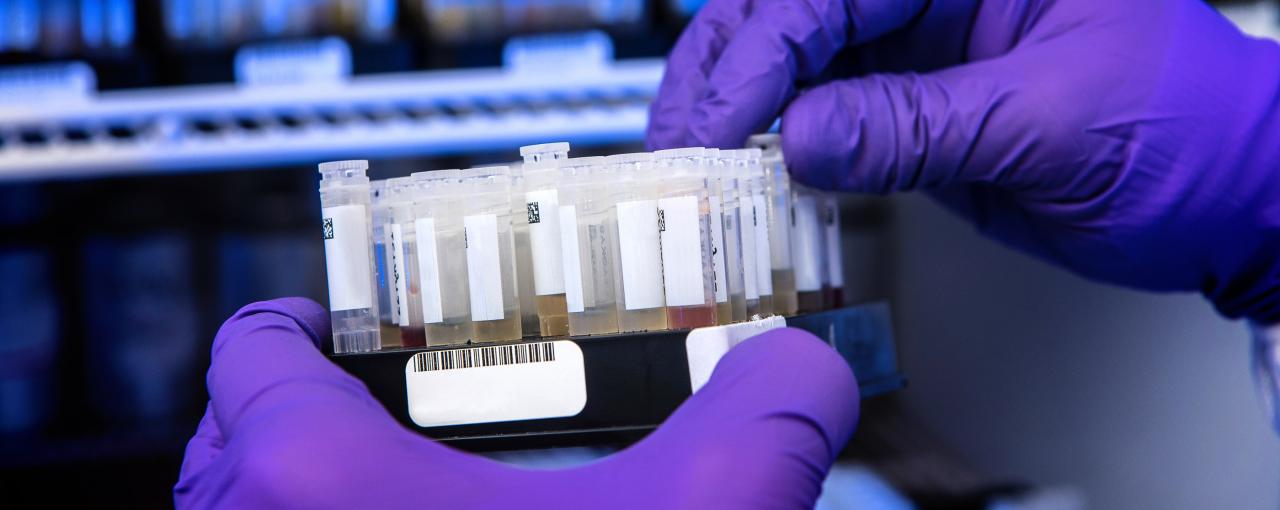Key research by a team involving the Research Complex at Harwell into how nanobodies derived from llamas can neutralize the SARS-CoV-2 virus has revealed further how these nanobodies attach to key spike protein the virus uses to attach itself to human cells.
Starting with a large library of simple llama antibodies, a large collaborative research effort led by Raymond Owens, Jiandong Huo and James Naismith from Protein Production UK (PPUK) and the Rosalind Franklin Institute found that certain nanobodies they had created from llama antibodies would neutralise the SARS-CoV-2 virus, binding tightly to the spike protein and blocking it from entering human cells. PPUK and Naismith Lab were previously in Research Complex, which remained open throughout the early stages of the pandemic with only key staff in the building in order to support this research.
Since publishing the initial findings, the team have made some exciting developments in clinical trials, with nanobodies appearing to reverse the effects of the virus in infected hamsters. Now a team of researchers from Research Complex, the Rosalind Franklin Institute, eBIC, Diamond Light Source and the universities of Oxford and Cambridge and the Punjab have uncovered the rules as to how nanobodies bind themselves to the spike protein.
By working on ‘naïve’ nanobodies in the lab (nanobodies that have not been exposed to any pathogen and have been created in the lab), the team worked together employing a number of different techniques including electron microscopy and were able to enhance the binding potency of nanobodies to the spike protein. Unlike the time-consuming process of going directly to animals for the antibodies, these naïve samples could be engineered in the lab into potent binders within a matter of days.
Co-author Dr Audrey Le Bas, a postdoctoral researcher at the Franklin, said: ‘By carrying out lots of complex analysis, we now have a much better understanding of the processes involved in nanobodies’ binding potency, and that makes engineered nanobody therapeutics for respiratory viruses a real possibility. If a new virus arrived tomorrow, I think we’d be in a good position to use and adapt this knowledge to target different pathogens and different proteins' (1).
Professor James Naismith, Director of the Rosalind Franklin Institute said: ‘One of the interesting things about this study, in my view, is that it was begun and carried out during lockdown periods of the pandemic. It’s a real triumph of teamwork' (1).
Professor Raymond Owens agreed, saying ‘These exciting findings are a great example of what’s possible with broad scientific collaboration. Without the unique infrastructure at Research Complex – particularly the technical skills and experience of the people there to turn DNA sequences into proteins – the project would never have even got off the ground.’
Halina Mikolajek, Miriam Weckener, Z. Faidon Brotzakis, Jiandong Huo, Evmorfia V. Dalietou, Audrey Le Bas, Pietro Sormanni, Peter J. Harrison, Philip N. Ward, Steven Truong, Lucile Moynie, Daniel K. Clare, Maud Dumoux, Joshua Dormon, Chelsea Norman, Naveed Hussain, Vinod Vogirala, Raymond J. Owens, Michele Vendruscolo and James H. Naismith, Correlation between the binding affinity and the conformational entropy of nanobody SARS-CoV-2 spike protein complexes, PNAS (2022).
Sources:
(1) Lab-derived nanobodies move closer to being potent addition to pandemic toolkit, Rosalind Franklin Institute, 18th July 2022.


